A 1935 Walking Liberty half dollar’s value starts at $10-$15 based on silver content, but varies significantly by mint mark and condition. Philadelphia coins (no mint mark) are worth their silver value when circulated. The 1935-D (Denver) commands higher prices in uncirculated grades, while the 1935-S (San Francisco) is generally the most valuable variant. Rare errors like doubled dies, clipped planchets, or foreign object strikes can increase value substantially, with some selling for thousands. Since all 1935 half dollars contain 90% silver, even worn coins retain melt value. Condition is crucial—uncirculated specimens are worth considerably more than circulated ones.
That Walking Liberty half dollar from 1935 sitting in your drawer might be worth more than you think. While every 1935 half dollar contains enough silver to guarantee at least $10-$15 in melt value, specific mint marks and condition grades can push values into hundreds or even thousands of dollars. Understanding what separates a common piece from a valuable specimen could mean the difference between spending silver content and cashing in on a genuine collector’s piece.
What Makes the 1935 Walking Liberty Half Dollar Special
The Walking Liberty half dollar, designed by Adolph A. Weinman, represents one of America’s most beautiful coin designs. The 1935 issue came from three mints: Philadelphia (no mint mark), Denver (D), and San Francisco (S). Each facility produced different quantities, directly impacting today’s collector values.
Philadelphia struck 9,162,000 pieces in 1935, making it the most common variety. Denver produced 3,003,800 coins, while San Francisco minted just 3,854,000. These production numbers matter because lower mintages typically translate to higher collector demand, especially in pristine condition.
All 1935 half dollars contain 0.36169 troy ounces of pure silver, comprising 90% of the coin’s composition. This silver content establishes the baseline value regardless of condition or rarity. When silver trades at $25 per ounce, the melt value alone reaches approximately $9. Current silver prices between $28-$32 per ounce push this floor to $10-$15 for any 1935 half dollar.
Value by Mint Mark: Philadelphia, Denver, and San Francisco
1935 No Mint Mark (Philadelphia)
Philadelphia pieces represent the most affordable entry point for collectors. In heavily circulated grades like Good-4, these coins trade for $15-$18, barely above silver melt. Fine-12 specimens command $20-$25, while Extremely Fine-40 examples reach $35-$45.
The real value jump occurs in uncirculated grades. An About Uncirculated-50 coin typically sells for $65-$85, while Mint State-60 pieces fetch $120-$150. Moving up to MS-63 quality pushes values to $200-$275. Top-grade MS-65 specimens, showing sharp strikes and minimal contact marks, trade between $450-$650 at major auctions.
According to Heritage Auctions 2023 records, a near-perfect MS-67 Philadelphia 1935 half dollar sold for $4,320, demonstrating the premium collectors pay for exceptional preservation.
1935-D (Denver)
Denver issues carry moderate premiums over Philadelphia coins. In Good-4 condition, expect $16-$20, while Fine-12 examples bring $22-$28. Extremely Fine-40 specimens trade for $40-$55, reflecting stronger collector interest.
Uncirculated Denver pieces show more dramatic value increases. About Uncirculated-50 coins sell for $75-$95, with MS-60 examples reaching $140-$180. MS-63 quality jumps to $250-$325, while MS-65 specimens command $600-$850.
A particularly well-struck 1935-D graded MS-66 sold through Stack’s Bowers in January 2023 for $2,160, showing sustained demand for premium Denver mint examples.
1935-S (San Francisco)
San Francisco half dollars typically bring the highest premiums among 1935 issues. Even in Good-4 condition, these coins start at $18-$22. Fine-12 examples trade for $25-$32, while Extremely Fine-40 pieces reach $50-$65.
The uncirculated market shows significant strength. About Uncirculated-50 coins sell for $90-$120, with MS-60 examples fetching $165-$220. MS-63 specimens command $300-$400, reflecting both scarcity and collector preference.
MS-65 San Francisco pieces represent serious collectibles, trading between $750-$1,100. Heritage Auctions reported a stunning MS-67 1935-S selling for $8,400 in August 2023, establishing a strong ceiling for exceptional examples.
| Grade | Philadelphia | Denver (D) | San Francisco (S) |
|---|---|---|---|
| Good-4 | $15-$18 | $16-$20 | $18-$22 |
| Fine-12 | $20-$25 | $22-$28 | $25-$32 |
| EF-40 | $35-$45 | $40-$55 | $50-$65 |
| AU-50 | $65-$85 | $75-$95 | $90-$120 |
| MS-60 | $120-$150 | $140-$180 | $165-$220 |
| MS-63 | $200-$275 | $250-$325 | $300-$400 |
| MS-65 | $450-$650 | $600-$850 | $750-$1,100 |
Error Varieties Worth Hunting
While 1935 Walking Liberty halves don’t feature the dramatic errors found in some coin series, certain varieties command substantial premiums. Understanding what to look for separates casual observers from serious collectors who spot valuable mistakes.
Doubled Die Errors
Doubled die errors occur when the die shifts slightly between hubbing impressions, creating a doubled image on the finished coin. On 1935 half dollars, look for doubling in the date, motto “IN GOD WE TRUST,” or Liberty’s profile details.
Most 1935 doubled dies show minor doubling visible only under magnification, adding $50-$150 to normal values in circulated grades. Dramatic doubled dies with naked-eye doubling are extremely rare but can command $500-$2,000 depending on condition and doubling severity. A 1935-D with strong doubled die obverse sold for $1,680 through GreatCollections in 2022.
Clipped Planchet Errors
Clipped planchets result from improperly fed metal strips during the blank cutting process. These errors create coins with missing segments, typically curved or straight clips along the edge. The 1935 series occasionally shows these dramatic errors.
Small clips affecting 3-5% of the planchet add $75-$200 to base values. Larger clips removing 10-15% of the coin can bring $300-$600. A 1935-S with a major 20% curved clip sold for $840 at a 2023 Heritage auction, demonstrating strong error collector demand.
Struck-Through Errors
Struck-through errors happen when foreign objects land on the planchet during striking. This creates impressions or void areas on the finished coin. For 1935 half dollars, struck-through fabric, wire, or other debris creates unique collectibles.
Minor struck-through errors showing small impressions typically add $100-$250. Significant struck-through errors with large impressions or dramatic surface disruption can command $500-$1,500. An exceptional 1935 Philadelphia half dollar struck through cloth, creating a distinctive pattern across Liberty’s gown, sold for $3,120 through Stack’s Bowers in March 2023.
Off-Center Strikes
Off-center strikes occur when the planchet isn’t properly positioned in the striking collar. This creates coins with design elements shifted from their normal positions, with part of the design missing and blank planchet visible.
Minor off-center strikes (3-5%) add $150-$300 to standard values. Moderate shifts of 10-15% bring $400-$800. Dramatic off-center strikes showing 25% or more displacement with complete date visibility can reach $1,000-$2,500. A 1935-D struck 30% off-center sold for $1,920 at a 2022 auction.
Grading Your 1935 Half Dollar
Accurate grading determines whether your coin trades near silver melt or commands significant collector premiums. Professional grading services like PCGS and NGC provide definitive authentication, but understanding basic grade characteristics helps identify potentially valuable pieces before investing in professional certification.
Circulated Grades (Good-4 Through AU-50)
Good-4 examples show heavy wear with Liberty’s details flattened and date barely readable. Fine-12 coins display moderate wear with major design elements visible but lacking sharp definition. Very Fine-20 specimens show light to moderate wear with most details clear but softened.
Extremely Fine-40 pieces exhibit light wear only on the highest points, with most detail sharp. About Uncirculated-50 coins show slight wear on Liberty’s breast, left leg, and left arm, with 90% or more of original mint luster remaining.
Uncirculated Grades (MS-60 Through MS-70)
MS-60 coins show no wear but display numerous contact marks and poor luster. MS-63 examples have moderate contact marks with good luster and eye appeal. MS-65 specimens show minimal contact marks, strong luster, and excellent overall appearance.
MS-67 and higher grades represent exceptional coins with virtually no contact marks, full original luster, and outstanding strikes. These premium grades account for the dramatic price increases seen in auction records.
Professional grading costs $25-$45 per coin through economy services, making it worthwhile for any 1935 half dollar appearing to grade MS-63 or higher. The cost-benefit analysis shifts dramatically when a $30 grading fee confirms a $600 MS-65 versus a $150 MS-60.
Maximizing Value When Selling Your 1935 Half Dollar
Understanding current market conditions and choosing appropriate sales channels directly impacts realized prices. The same MS-65 1935-S might bring $750 through a quick online sale or $1,050 through a specialized auction targeting Walking Liberty collectors.
When to Consider Professional Grading
Submit coins for professional grading when they appear to grade Extremely Fine-40 or higher for Philadelphia issues, or Very Fine-20 or higher for Denver and San Francisco pieces. Error coins showing obvious doubled dies, clips, or struck-through features also merit professional authentication regardless of base grade.
The certification holder, or “slab,” provides tamper-evident protection, third-party authentication, and standardized grading that removes buyer uncertainty. PCGS and NGC graded coins typically bring 15-30% premiums over raw coins in equivalent condition when selling to dealers or at auction.
Best Sales Venues for Different Values
For common circulated pieces worth $15-$50, local coin shops offer immediate payment and convenience. Expect offers at 80-90% of retail value, representing fair wholesale pricing.
Mid-range coins valued $50-$300 perform well on eBay or specialized forums like CoinTalk’s marketplace. These platforms connect with active collectors willing to pay near-retail prices. Factor in 10-15% selling fees and shipping costs when calculating net proceeds.
Premium pieces worth $300 and up benefit from major auction houses like Heritage, Stack’s Bowers, or GreatCollections. These venues attract serious collectors competing for quality material, often driving prices above published price guides. Auction commissions typically run 10-20%, but access to global bidder bases justifies the fees for significant coins.
Building a Complete 1935 Half Dollar Collection
The 1935 Walking Liberty half dollar series offers collectors an achievable completion goal with manageable costs across most grades. A complete three-coin set in Fine-12 condition runs $67-$85, while Extremely Fine-40 examples require $125-$165. Moving into uncirculated territory, an MS-63 set costs $750-$1,000, representing a meaningful investment in classic American silver.
Focus initial collecting efforts on acquiring one example of each mint mark in the best affordable grade. This approach builds foundational knowledge while assembling core holdings. As budget permits, upgrade individual pieces to higher grades, experiencing firsthand how strike quality, luster, and surface preservation impact both value and aesthetic appeal.
Consider pursuing a graded registry set through PCGS or NGC. These competitive collecting programs rank sets by grade points, encouraging continuous improvement while connecting collectors with similar interests. Many Walking Liberty specialists began with 1935 sets before expanding into more challenging years and varieties.
Your 1935 half dollar represents tangible American history combined with intrinsic precious metal value. Whether you’re evaluating inherited coins or actively building a collection, understanding the specific characteristics that drive value transforms interesting old coins into genuine investment pieces worthy of preservation and appreciation.
You may be interested:
- 1859 Indian Head Penny Coin Value Complete Errors List And No Mint Mark Worth Guide For Collectors
- 1911 V Nickel Coin Value Guide Complete Errors List And No Mint Mark Worth Today
- 1902 Dime Coin Value Complete Errors List With O S And No Mint Mark Worth Guide
- 1788 Quarter Coin Value Complete Guide Errors List And D S P Mint Mark Worth Revealed
- 1776 To 1976 Bicentennial Half Dollar Coin Value Complete Errors List And What Your D S And No Mint Mark Coins Are Actually Worth
- 1990 Penny Coin Value Errors List How D S And No Mint Mark Pennies Are Worth Thousands Of Dollars

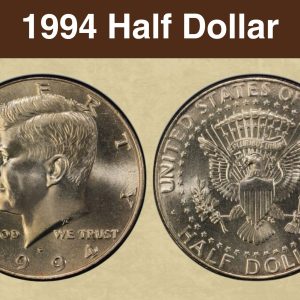
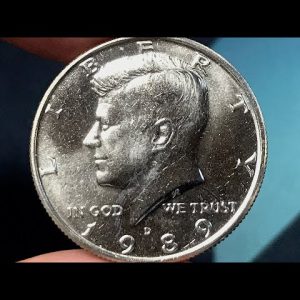
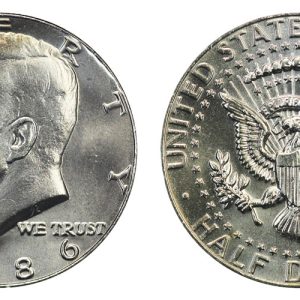
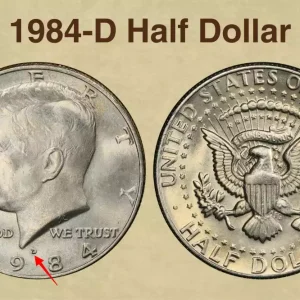
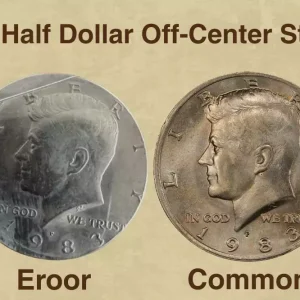
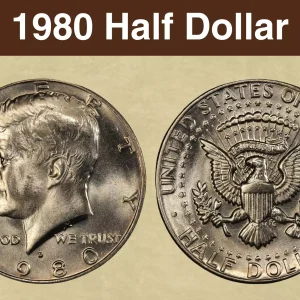
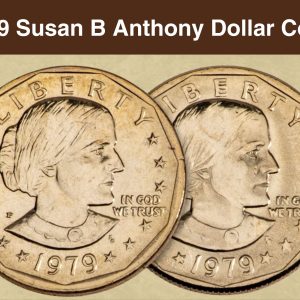
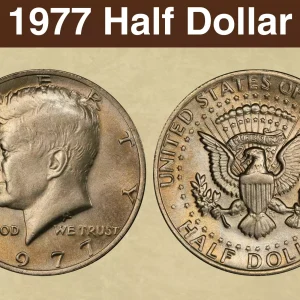
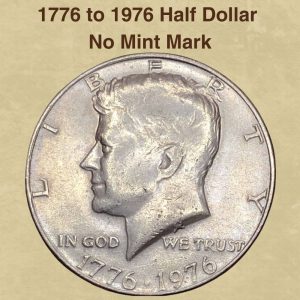
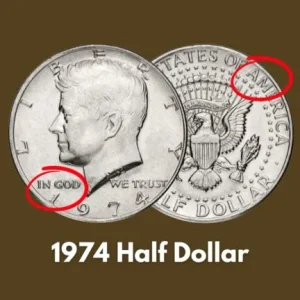
Is a 1935 half dollar worth anything?
A 1935 half dollar’s value ranges from about $15 for a coin in “Good” condition to over $20,000 for a coin in pristine, uncirculated condition, with values heavily dependent on its specific mint mark (P, D, or S) and overall grade. Circulated coins are generally worth between $19 and $155, while uncirculated versions are much more valuable, with the ‘S’ and ‘D’ mint marks fetching higher prices than the ‘P’ (Philadelphia) mint mark.
What are the key dates for the Walking Liberty Half Dollar series?
The key dates for Walking Liberty half dollars are the 1916-S, 1921, 1921-D, and 1938-D, which are all notable for their low mintages. The 1916-S is the first year of the series, the 1921 issues have very low mintages due to the transition from the previous coin design, and the 1938-D is a later key date with low production numbers.
Where is the mint mark on 1935 half dollar?
During the first two years, the mint mark was placed on the obverse (Walking Liberty) side of the coin. Beginning in 1917, the mark was moved to the reverse (Eagle) side. The design remained the same until 1947, when it was replaced with the Franklin half dollar.
What is the error on the 1935 Walking Liberty coin?
An exceptionally rare type of error. The entire right side of the front of Walking Liberty on this coin was struck through foreign object in error at the Philadelphia mint. There appear to be rows of serial numbers or digits in the strike. There’s a good probability that this was a cigarette or a gum wrapper.